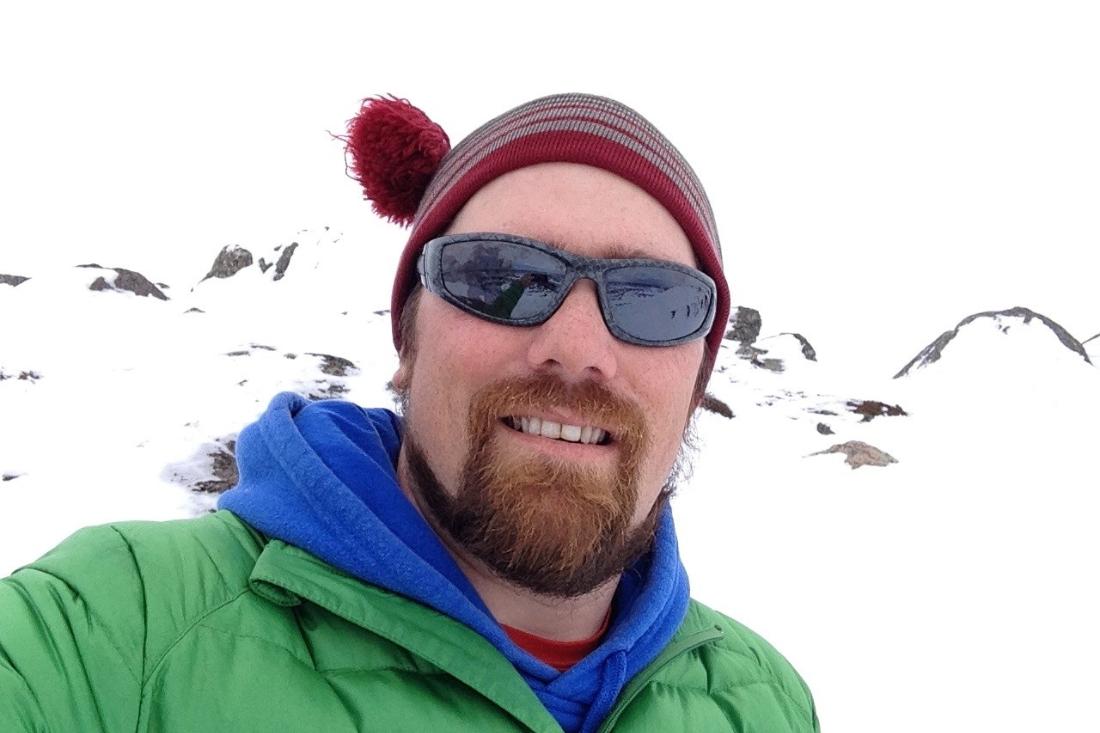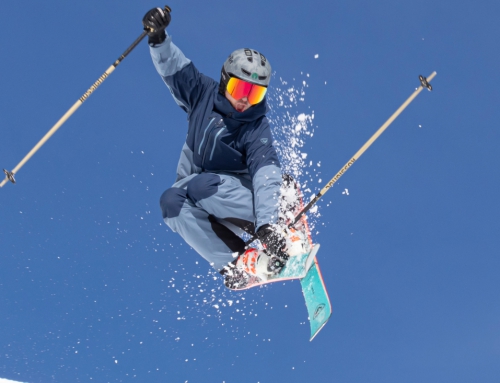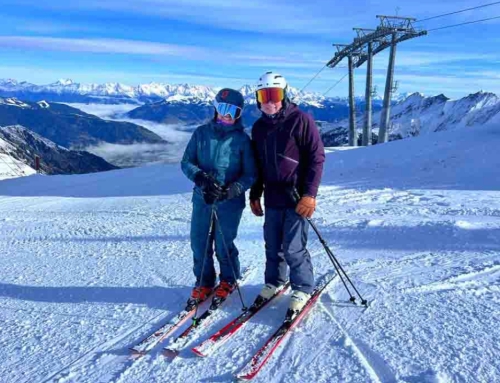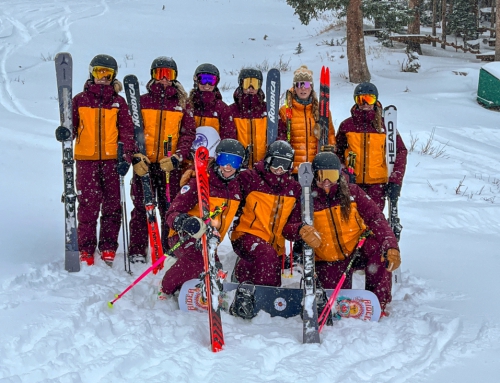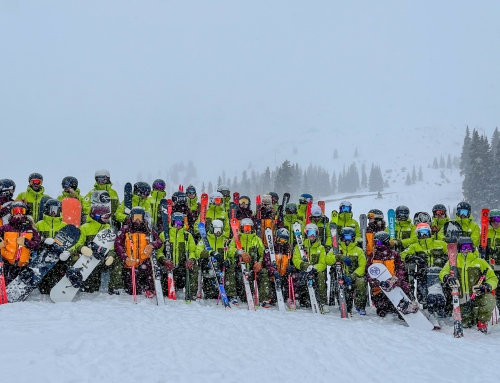Chasing Winter with Windham Mountain Club’s Dan Hogan
Dan Hogan, the director of the ski and ride school at New York’s Windham Mountain Club, started teaching skiing at the age of 15 at Wachusett Mountain, in Massachusetts, leading lessons after school and on weekends.
When he got to college, he realized he could turn it into a career, and started taking classes in hospitality and tourism.
“Teaching and skiing were the places I felt the most socially accepted, and I really did like the work, so it just felt like a natural path to follow,” Hogan said.
While teaching between classes in college, Hogan met former PSIA Alpine Team member Terry Barbour, who encouraged Hogan to continue achieving advanced certification.
“Terry really mentored me a lot and showed me that it was possible to make a career,” Hogan said. “He’s the one who helped me get the determination to really go for it and be all in.”
But it wasn’t until he was skiing with Andrew Snow, another instructor friend who was working at Mad River Glen, when Hogan realized he could actually ski and teach all year long.
“Andrew was working at Mount Hotham [in Australia] and going back and forth between the hemispheres to follow the snow,” Hogan said. “Which just sounded incredible to me and became a dream of mine.”
Making It Happen
By 2006, Dan, who had his Alpine Level III, and his wife-to-be, Jenni, who had her Alpine Level II, decided to make their Southern Hemisphere ski teaching dreams come true and applied to six ski areas in Australia and New Zealand.
“Perisher got back to Jenni pretty quickly with a job offer,” Hogan said. “But I didn’t hear anything.”
After a few days went by, Tina Burford, who was the ski school director at Perisher at the time, called and said, “Hey, if you want an instructor job, I’ll give you a job. But I actually have this kids’ training supervisor role that’s new and want to see if you’d be a good fit.”
“After the interview,” Hogan said, “Jenni and I both just ended up taking the jobs right then and there.”
Perisher offered housing options in the town of Jindabyne, a 30-minute drive from the hill, and also on the mountain, where Dan and Jenni would spend the season. Because they showed up two weeks early for Dan to start his supervisor training – and because they didn’t know the country – they kept getting stranded, in Sydney when they landed, at the train station where they had to repackage all their ski gear, then again at the station in Canberra, where they paid $600 for a private car to take them to the mountain.
Arriving two weeks before the season began meant they also had to keep finding rides back and forth to Jindabyne for groceries and bedding – stocking up their backpacks with food as they waited for the on-mountain restaurants and one small grocery store to open.
What they didn’t know was how quickly everything would shift into high gear once the lifts started running.
Teaching
“So the mountain opens on the Queen’s Weekend, which is now the King’s Weekend. And they have one trail open. We still don’t have all the staff there, and we’re teaching back-to-back two-hour lessons.”
Getting kids into and out of their equipment, running practice magic carpet runs, trying to manage over-interested parents, introducing kids to their first rope tow rides, and maintaining class management – while sprinkling in some learning – all while the Australian sun bakes down on you, or you get soaked in the rain, quickly become part of the daily program.
“Everything was on such a tight schedule, from the length of each lesson to how long you had to order, eat, and pick up after lunch,” said Hogan. I’d get to the end of the day and just be laughing. I was like, well this is what you signed up for. I truly think that winter made me a better human. It’s all more manageable now than it was then. But it was very hard at the beginning. It was full on.”
Not the kind of work Hogan would recommend for instructors who like to take leisurely lunch breaks with their clients, followed by cruising a couple of blue runs. Or especially not for instructors who are imagining a ski teacher’s vacation.
“I’d see instructors go and fail because I don’t think they were adequately prepared for what they signed up for and just burned out,” Hogan said. “But you go into the locker room at the end of the day, and you know everyone there shows up to work hard and get better at it. You all have that immediate bond with people from all over the world.”
He added, “When you have the work ethic, mentality, and mindset of, ‘I’m going to figure this out. I’m going to be good at it,’ then you fit in with everybody. You learn from other people, and you start skiing with them, then having beers with them, and all of a sudden you’ve got lifetime friends.”
Hogan said there were less busy options for instructors who wanted more time for skiing, including packed, two-day children’s classes for international instructors who were also training for FIS points, or school bus groups that would arrive every morning.
“But I worked from the start of the day until the end of the day and just put it all away, and every year I had enough to spend on a really fun vacation at the end of the season, as well as in my pocket for savings when we flew back home,” Hogan said.
Summer at Home
It was a broken leg in 2019 that finally ended Hogan’s multiyear endless winter run.
“I took a pretty good crash and was only halfway through the recovery process when the new season was starting,” he said. “I didn’t want to be halfway around the world from my doctor and my PT, and I didn’t want to be hobbling around the different snow conditions on the mountain. And then the next year Covid happened.”
“But all the business has come back,” he added. “And they’ve been hiring. I’ve referred a bunch of people since then.”
For any instructor who wants to consider an endless winter for themselves, Hogan said:
- Be at the front of the hiring cycle. Applications typically come out in January. You want to be in that January/early February cycle. You don’t want to be the last guy in, struggling to get housing and accepting the odd job that’s left over.
- Find the Facebook housing pages and group chats for people who are new to the area so you can get connected and start planning.
- Figure out what you’re going to do for transportation. Do you know anyone at your house that has a car? If you don’t, find out how to join a group that’s organizing rides to the mountain.
- Be prepared to work hard, learn from different cultures, experience some horrendous weather at times, and have a lot of fun.
***
Don’t forget to check out the Q&As in the Chasing Winter series: PSIA Alpine Team member Ben Potts, PSIA Examiner Francesca Pavillard-Cain, AASI Snowboard Team Development Coach Tony Macri, and PSIA Alpine Team Technical Coach Michael Rogan.

